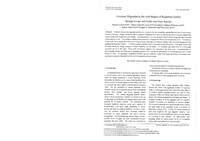Livestock Migration in the Arid Region of Rajasthan (India) - Strategy to Cope with Fodder and Water Scarcity -

Authors:
Livestock rearing is an important pathway out of poverty for both pastoralist communities and mixed crop-livestock
fanners in drylands. Pastoral cnt.ecprises make an important contribution to the state, as well as to the national economy, despite their
location in the most drought-prone part of India. Livestock keepers move their animals in search ofbctter forage and water resources
during scarcity periods. Thus livestock mobility allows pastonilists to maintain their flocks and lead productive lives. The objective
of this study was to analyze the existing and emerging trends with respect to livestock: mobility, issues of animal management and
problems faced during migration. A stratified random sampling method was used for household surveys. Thc results revealed that
the main community rearing livestock in westt.'Ill Rajasthan was the Raika. The flockJherd size varied from 42 to 250 smaI.l
ruminants and 35 to 220 cattle. Three kinds of livestock migration were prevalent in the study areas: I) localltemporary 2)
semi-migration in large size flocks and 3) permanent migration where animals arc permanently moved from the home tract to O!her
districts or states. It is important to understand livestock migration within the context of the larger agricultural, environmental, and
sociological systems so that rational policies can be fonnulatcd and implemented.
